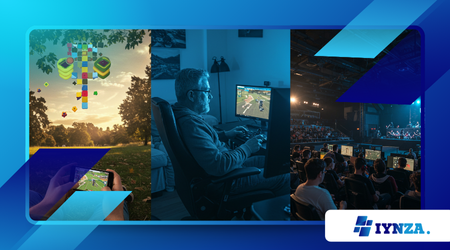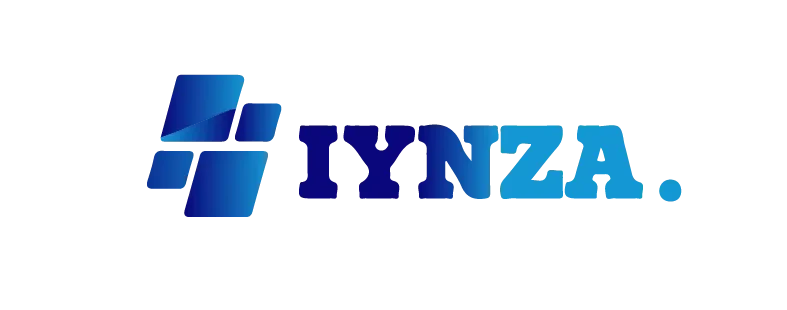De casual a profesional: por qué las microdecisiones importan más que los reflejos

La mayoría de los jugadores creen que los reflejos hacen al profesional. Pero la verdad es más compleja. No se trata solo de quién juega más rápido, sino de quién toma microdecisiones más inteligentes bajo presión. Estas pequeñas decisiones ocurren a cada segundo en el juego competitivo y determinan silenciosamente los resultados mucho más que las jugadas llamativas o la velocidad de reacción.
Anuncios
Comprender por qué rotas temprano, cuándo entrar en acción o cómo fintar un flanco puede ser más efectivo que acertar un solo golpe. Los jugadores profesionales se basan en este mapa interno de conciencia situacional, sincronización y disciplina mental que se desarrolla con la experiencia.
Si quieres ascender en la clasificación, mejorar tu porcentaje de victorias o incluso convertirte en profesional, empieza a prestar atención no solo a tu puntería, sino también a tus decisiones. Porque eso es lo que distingue a un jugador reactivo de uno dominante.
¿Qué son las microdecisiones en los juegos competitivos?
Las microdecisiones son esos juicios instantáneos que influyen en el posicionamiento, el uso de habilidades, el timing y la gestión de riesgos. Ocurren constantemente: cada vistazo, recarga o rotación tiene una consecuencia.
Mientras que los reflejos responden a lo visible, las microdecisiones anticipan lo que viene.
Piensa en elegir si mantener a un esquinero o un suplente. Si provocar a un compañero o jugar juntos. Si usar tu ventaja ahora o reservarla para un momento decisivo.
Todas estas son microdecisiones. Se combinan, moldean el impulso y, en última instancia, definen si controlas el juego o simplemente reaccionas a él.
Los mejores jugadores entrenan esta capa de juego de la misma manera que otros entrenan la puntería. Revisan repeticiones, estudian los hábitos del oponente y comprenden el flujo del mapa como un tablero de ajedrez. Y se nota.
Lea también: 10 consejos profesionales para mejorar tus habilidades de juego en 2025
Cómo los profesionales entrenan la toma de decisiones bajo presión
Los mejores atletas de esports no solo se dedican a jugar durante horas. Revisan sus partidas deliberadamente para evaluar sus decisiones: ¿Se pasaron de tiempo? ¿Rotaron demasiado pronto? ¿Desperdiciaron tiempo de reutilización?
Un método común es la revisión de 3 preguntas: tras una derrota, se preguntan: ¿Qué vi? ¿Qué esperaba? ¿Qué elegí y por qué? Esto enmarca sus decisiones en el contexto del desarrollo del juego, no solo en la mecánica.
También entrenan con objetivos específicos. Un día pueden centrarse solo en el tiempo. Otro, en el espaciamiento. Al aislar las variables, aprenden a tomar microdecisiones conscientes incluso en partidos caóticos. ¿El resultado? Calma bajo presión y movimientos que se sienten intuitivos porque se practican.
Por qué los reflejos por sí solos no son suficientes en los rangos superiores
Los reflejos ganan duelos. Pero no juegos. A medida que subes de nivel, tus oponentes son igual de rápidos, así que la ventaja se centra en la información, la anticipación y la sincronización.
Un jugador más lento que se posiciona mejor, usa la información con inteligencia y aprovecha las ventanas de tiempo adecuadas puede superar consistentemente a alguien con manos más rápidas pero con poca visión de juego. Por eso, a menudo verás a jugadores de elo alto con una puntería promedio superando a los dioses de la puntería atrapados en rangos medios.
Los reflejos se desvanecen. Pero las decisiones inteligentes escalan. Se adaptan a distintos objetivos, parches e incluso títulos. Aprender a valorar las microdecisiones por encima de la habilidad pura es lo que permite a los jugadores mantenerse dominantes, incluso cuando sus mecánicas se estancan.
Practicando la consciencia: Por qué cada segundo cuenta
Muchos jugadores ocasionales subestiman la cantidad de información disponible en cualquier momento. Desde las señales sonoras y las actualizaciones del minimapa hasta el comportamiento de tus compañeros, las partidas competitivas te proporcionan datos constantemente. La diferencia entre jugadores de bajo y alto nivel suele residir en cómo procesan y actúan con base en esta información.
Para agudizar tu consciencia, empieza con un objetivo simple: narra tus acciones mentalmente. "Escuché bien los pasos". "Nuestro duelista murió sin intercambiar". "Están girando rápido". Este hábito te hace más consciente del entorno, por lo que tus decisiones no se basan en el instinto, sino en las señales.
Con el tiempo, esto se convierte en una sensación de fluidez en el juego. Sentirás cuando algo no funciona, girarás antes de que el enemigo llegue al objetivo y retrasarás la utilidad porque percibes una falsificación. No son suposiciones, sino patrones aprendidos que surgen de una percepción refinada.
Entrena tu cerebro para mantener la curiosidad. Pregúntate: ¿Qué sé? ¿Qué no sé? ¿Qué estoy asumiendo? Estas sencillas preguntas te ayudan a convertir fragmentos dispersos del juego en una imagen clara, y esa claridad es lo que hace que tus microdecisiones no solo sean más rápidas, sino también más inteligentes.
Aprendiendo de las pérdidas: Convertir los errores en estrategia
Cada muerte es una lección. Pero solo si estás dispuesto a verla sin ego. Pasar de ser un jugador casual a un profesional implica desarrollar una mentalidad que valora la retroalimentación más que el orgullo. Cuando algo sale mal, tu primer instinto no debería ser culpar al lag, a los compañeros ni al RNG. Debería ser: "¿Qué podría haber hecho diferente?".
Las revisiones posteriores al partido son tu mejor aliado. Céntrate en las rondas que perdiste. ¿No te equivocaste al elegir el momento? ¿Te excediste? ¿Había una mejor posición que ignoraste? Encuentra la decisión que falló la ronda y corrígela.
La clave aquí no es el castigo, sino el refinamiento. Los profesionales no son perfectos. Simplemente se recuperan más rápido porque aprenden más rápido. Cuando una decisión falla, la ajustan. La próxima vez, no la repiten. Así es como evoluciona la estrategia.
Hazlo un hábito: después de cada partido, anota una buena decisión y una mala. No tiene por qué ser un error grave, solo algo que podría haber sido más limpio. Luego, practica cambiar esa decisión la próxima vez que juegues. Mejorar no es un salto. Es una serie de decisiones ajustadas, tomadas con intención.
Pensando en el futuro: desarrollo de la profundidad estratégica
Los mejores jugadores no solo reaccionan a lo que sucede, sino que piensan en el futuro. La profundidad estratégica implica ver más allá del momento presente y planificar acciones que moldeen el futuro de la ronda o el partido. Es una de las habilidades más decisivas al pasar de un jugador ocasional a un profesional.
Digamos que tu equipo ha ganado dos rondas y esperas una salvación. Un jugador casual podría presionar agresivamente para conseguir bajas. Un jugador estratégico mantendrá los ángulos, buscará la utilidad y asegurará las armas. Ambos caminos podrían terminar en victoria, pero solo uno te prepara para la siguiente ronda con recursos y control del mapa.
La profundidad estratégica también implica adaptarse a los cambios del metajuego, analizar las composiciones del equipo y preparar estrategias de contraataque. Es lo que te hace valioso más allá del objetivo. Los entrenadores buscan jugadores que piensen como analistas. Y los compañeros confían en los jugadores que anticipan los problemas antes de que surjan.
Desarrollar mejores hábitos: la clave para un juego de nivel profesional
Pasar de ser un jugador casual a un profesional no se trata de una transformación repentina. Se trata de desarrollar hábitos que se alineen con un juego intencional. Empieza grabando tus partidos y viéndolos como un entrenador. No preguntes cómo fallaste ese tiro. Pregúntate por qué aceptaste esa pelea.
Crea listas de verificación mentales. Antes de presionar: ¿Tenemos información? ¿Qué utilidad necesitamos? ¿Quién debería liderar? Estas preguntas te ayudan a actuar con propósito en lugar de con emoción.
Y lo más importante, considera cada partida como una práctica. La clasificatoria no solo sirve para ganar puntos, sino para reconocer patrones, ser consciente de uno mismo y probar decisiones bajo presión. Porque ese es el verdadero esfuerzo.
Preguntas frecuentes: De casual a profesional
1. ¿Necesito tener reflejos increíbles para ser profesional en los videojuegos?
No. Los reflejos ayudan, pero la toma de decisiones inteligentes y la constancia importan más a largo plazo.
2. ¿Cómo puedo mejorar mis microdecisiones?
Revisa tus juegos, haz un seguimiento de tus decisiones y practica el conocimiento de la situación en cada partido.
3. ¿Qué juegos se benefician más de las microdecisiones?
Los shooters tácticos, los MOBA y los Battle Royale priorizan el pensamiento estratégico sobre la velocidad pura.
4. ¿Con qué frecuencia debo revisar mi juego?
Intenta revisar al menos un juego al día con total concentración. La calidad es mejor que la cantidad.
5. ¿Puede el coaching ayudar en la toma de decisiones?
Por supuesto. Los buenos entrenadores entrenarán tus patrones de pensamiento, no solo tu mecánica.
